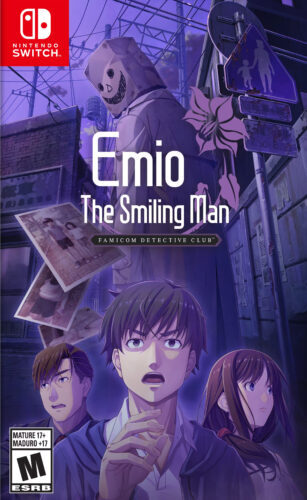Samantha Lienhard's Blog, page 16
October 21, 2024
Celebrating All Things Spooky: Death Mark II
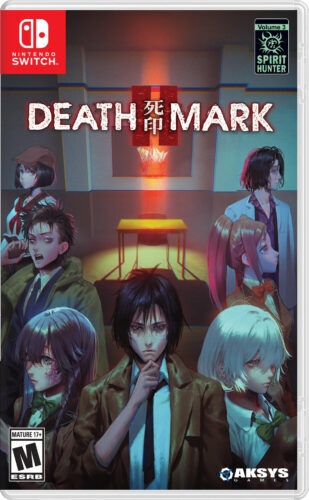 Four years ago, we talked about Spirit Hunter: Death Mark.
Four years ago, we talked about Spirit Hunter: Death Mark.
Two years ago, we discussed its sequel, Spirit Hunter: NG.
So it’s fitting that one of this year’s games is the third entry in the series (despite any confusion that might come from its English title), Spirit Hunter: Death Mark II.
Death Mark II follows the protagonist of the first game, who has been called in to a high school because of his experience dealing with supernatural occurrences. The school has seen several disappearances at the hands of malevolent spirits, all announced in advance by a spirit called The Departed.
Other returning characters from the first game show up as well to assist with the investigation, which was a nice touch, even though new characters take central stage for the story.
Gameplay has a few major changes compared to the previous games, the biggest of which is that exploration is handled in a side-scrolling format. Certain areas still shift into the first-person adventure game view, but for the most part you’ll be walking across each area. As you move through an area, key points to investigate will be highlighted for you to find the clues you need, as well as a type of collectible that you can trade for items that make spirit encounters easier.
Encounters with spirits are more RPG-like than ever. You and your partner each have a stat that decreases as you take damage – and as you choose actions. On each turn, you’ll need to select an item and an action you want to use it for, with a percentage chance of success.
To be honest, the percentage system feels like a waste of time. Choosing the wrong item/action causes you to take damage from the spirit’s attack, but the few times I actually had my action fail, that didn’t happen, so a failure only costs you the health you expended to attempt it. Between that and how rare failures actually are, it just feels like a completely pointless system.
It was probably added to balance out how these encounters have been simplified. Picking the wrong item won’t put you on track for a bad ending like in Death Mark or lead to a game over like in NG, although the threat posed by the spirits still makes encounters tense. It definitely gives it more of an RPG-like feel.
The biggest focus here is on the story, and I’d say that’s where Death Mark II shines. I think I enjoyed the story of the first Death Mark the best still, but this one comes in second. It’s a dark story with some interesting twists, the individual spirits’ stories are also good, and it highlights everything with some truly unsettling deaths. They went all out on the body horror for the victims.
Unfortunately, it’s not very scary. I know I said that about NG, but Death Mark II is even less scary than that. Despite the game having a warning about jumpscares and the option to turn them off, the jumpscares pretty much always happen when you load a new area and become sadly predictable. I miss the scares of Death Mark and NG, and I can’t help but think the switch to side-scrolling contributed to their loss the most.
One more gripe before I move on – the title. From the moment it was announced as Death Mark II, I criticized the name for being confusing since it’s the third game in the series. Now I think I understand why they went with that title, first because it stars the same protagonist as Death Mark, and second because it’s set before NG. Chronologically, it’s the second game. But it bugs me that the term Death Mark referred to something in the first game’s plot but doesn’t really have anything to do with this game’s plot at all. I wish they had gone with a different title. (During one of the voice acted parts, I’m pretty sure I heard a character say “shibito” at one point, which got me thinking about its Japanese title Shibito Magire and how different its English title is.)
Anyway, it is what it is. Death Mark II. I devolved into complaining near the end here, so I want to repeat that I enjoyed this game. Investigating and finding the hidden collectibles was fun, I enjoyed the story and seeing the old cast again, and I appreciated how getting the good ending was a lot more straightforward this time. I even went through the final couple of chapters a second time to get the true ending as well.
If you liked the first two Spirit Hunter games, it’s worth playing Spirit Hunter: Death Mark II. It’s probably the weakest of the three, but it’s still an enjoyable, spooky adventure – and a perfect one for Halloween.
Now, the real question is if we’ll have a fourth Spirit Hunter game to to review two years from now. One can only hope.
---If you want posts like this delivered straight to your inbox, enter your email in the box below to subscribe!
Did you enjoy this post? Be sure to share it with your social networks! The post Celebrating All Things Spooky: Death Mark II appeared first on Samantha Lienhard.
October 18, 2024
Celebrating All Things Spooky: Control
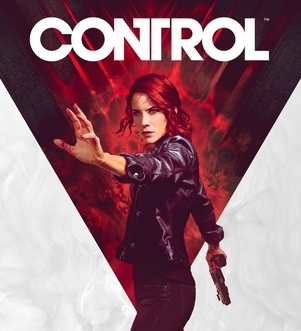 After all this time, I’ve finally finished Control.
After all this time, I’ve finally finished Control.
If you’ve been following my blog for a while, you might remember my Control tale of woe. I started the game shortly after it came out but encountered a game-breaking bug that made it impossible for me to continue. My only choice was to start the game over from the beginning, and the thought demoralized me.
They eventually patched the bug, but it was too late for someone who had already triggered it. So I let Control sit until last October, when enough time had passed that it felt fresh enough for me to restart.
I actually played most of Control last year, though not in time for Celebrating All Things Spooky 2023, and then followed it with the AWE expansion. Then I took a break. A few days ago, I realized I still hadn’t played Foundation, so I played that for this October and finally brought Control to a close.
Control is not a horror game, but it undeniably has a creepy and sometimes unsettling atmosphere. It’s set at the Federal Bureau of Control, a secret government agency that monitors and contains supernatural phenomena. When Jesse Faden arrives at the Bureau while searching for her brother, she is unexpectedly chosen as the new Director and finds herself fighting mysterious entities known as the Hiss who have attacked and possessed most of the people in the building.
It’s an action-adventure game, with third-person shooter combat that also makes use of special abilities you learn as you play, such as using telekinesis to throw objects in the room at enemies.
It’s fun, challenging at times, and has a great atmosphere that blends eerie creepiness with an off-beat sense of humor. When you pick up a document (of which there are many, along with audio logs and other pieces of media), you never know if it’s going to be a disturbing tale of people falling prey to powers beyond their comprehension or a letter from someone who thinks their potted plants are giving them coded messages.
Most of these supernatural incidents and objects you learn about just as part of the background lore, although you interact with some directly (sometimes to get new powers). Of course, as a big Alan Wake fan, I was delighted that the Bright Falls incident was among that lore.
So I really love the lore, background details, and the general tone of the game.
The story… is confusing. By the end, I understood it better, but there are still a lot of cryptic and unclear points. Intentionally so. It’s a surreal experience.
Now, the AWE DLC takes a step further in tying Control directly to Alan Wake. As you might imagine, this means it’s even more confusing. It’s a great DLC, and I loved how it tied the two games together, although the final boss fight was unfortunately frustrating. Story-wise, it left me quite confused.
Foundation is a bit more straightforward in terms of story and serves as an epilogue, so I’m glad I played it last. It also seems to set the stage for a sequel, and we know Control 2 is in development.
Overall, Control is a game filled with creepy, disturbing, and sometimes surprisingly humorous supernatural elements. It’s not quite like any other game, and it’s definitely worth playing, even though I’d struggle to explain parts of it. And if you love finding little pieces of lore as you play, you’ll probably love Control.
---If you want posts like this delivered straight to your inbox, enter your email in the box below to subscribe!
Did you enjoy this post? Be sure to share it with your social networks! The post Celebrating All Things Spooky: Control appeared first on Samantha Lienhard.
October 16, 2024
Celebrating All Things Spooky: Corpse Party: Sweet Sachiko’s Hysteric Birthday Bash
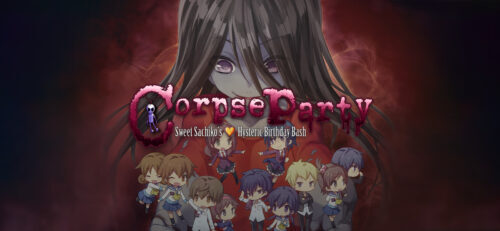 Three years ago, we discussed the Corpse Party remake.
Three years ago, we discussed the Corpse Party remake.
Last year, we moved on to Book of Shadows.
And so for this October, I played the next game in the series. Which, as I mentioned near the end of my Book of Shadows review, is not Blood Drive but rather the comedy midquel Corpse Party: Sweet Sachiko’s Hysteric Birthday Bash.
The usual Corpse Party horrors are temporarily put on hold as the cast is gathered together in one place to celebrate Sachiko’s birthday (whether they want to or not)! Now they have to put on a cultural festival, with a variety of strange and sometimes deadly activities on the schedule.
While Book of Shadows combined adventure game elements with a visual novel presentation, this one is a pure visual novel. Occasional choices will determine if you clear a given chapter or get one of its numerous, often hilarious bad endings, but most of your time will be spent reading.
It’s definitely a dramatic change in tone, albeit still with a Corpse Party flair. You might get a bad ending where a character gets a kidney cut out, for example, except it’s played for laughs. Or maybe a character will go insane and fall into despair, but for ridiculous reasons.
Oh, and the lighter tone means the fanservice is also cranked up way past its usual levels, with some very awkward moments.
I found it to be a pretty funny game. I wasn’t sure about it when I started, but I ended up being happy I played it, even if it’s not quite the usual Corpse Party fare.
Click for Sweet Sachiko's Hysteric Birthday Bash spoilersHonestly, I felt sad at the end when everyone was crying and Sachiko started to have second thoughts, only for everything to reset. It felt like a glimpse of what could have been a happy ending before it was torn away.The only thing that bugged me was that there didn’t always seem to be a natural narrative flow from one chapter to the next, but that can probably be excused as Corpse Party weirdness.
A bonus chapter at the end takes on a more serious atmosphere, potentially setting up more things for Blood Drive. I remember reading that the reason this entry is important is because it introduces characters who appear in later games, although I’d also add that there’s also just something nice about seeing these characters together in a less intense situation.
At the end of the game, you also unlock messages from the voice actors again, and I love hearing their thoughts on the script, the series, the recording sessions, etc. I wish more games did that.
Overall, Corpse Party: Sweet Sachiko’s Hysteric Birthday Bash is not a scary game, and it doesn’t really advance the Corpse Party storyline, but it fits the bill for spooky comedy. So if you’re just here for the horror, this probably isn’t the game for you. But if you like the characters, enjoy (or at least don’t mind) the fanservice, and want to see some wacky comedy antics, it’s worth taking a look.
Meanwhile, the upcoming Corpse Party II: Darkness Distortion has been delayed to 2025. I’d been wondering why we didn’t have a release date yet, and now we know. At least this will give me more time to catch up on the series with Blood Drive before it comes out!
---If you want posts like this delivered straight to your inbox, enter your email in the box below to subscribe!
Did you enjoy this post? Be sure to share it with your social networks! The post Celebrating All Things Spooky: Corpse Party: Sweet Sachiko’s Hysteric Birthday Bash appeared first on Samantha Lienhard.
October 14, 2024
Celebrating All Things Spooky: Kwaidan ~Azuma manor story~
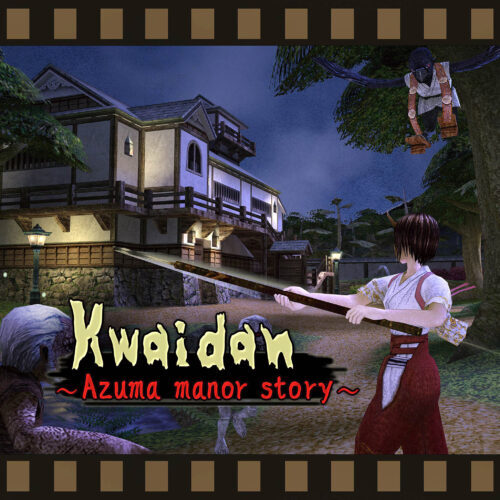 For our next spooky game, let’s face off against more yokai – excuse me, Yoki – this time in a survival horror game.
For our next spooky game, let’s face off against more yokai – excuse me, Yoki – this time in a survival horror game.
Kwaidan ~Azuma manor story~ is inspired by the classics, complete with fixed camera angles and the option to play with either tank controls or modern controls.
I played the Switch version, although it’s on PS4 and PC as well.
You play a young woman training to be a Hoshoshi, someone who drives off evil spirits. When she and her mentor learn Azuma Manor has been overtaken by Yoki (why they didn’t call them yokai remains a mystery to me), they head in to handle the problem.
Now, Kwaidan has one weird quirk, which is its inclusion of point-and-click adventure controls. For the most part, you run around and fight enemies like you would in any game with 3D exploration, but when you want to interact with something in the environment or your inventory, you have to hover over it with a cursor first instead of just pressing a button. This is unnecessarily awkward, particularly since you need to be right by an object to interact with it anyway.
Your inventory also remains on-screen at all times, and you use the cursor to interact with it as well. While you have a limited inventory, resource management never really comes into play.
Combat in Kwaidan is a bit unusual for the genre. You have three weapons, one to attack right in front of you, one to attack enemies low to the ground, and one to attack enemies in the air. The latter two consume energy, which you can build up again by defeating enemies or defending against attacks. This makes it tilt slightly more toward action, a bit closer to Onimusha than Resident Evil.
Enemies respawn, which I found annoying at first, until I realized it’s almost a necessity because of the small game world. While it has the usual sorts of item-based puzzles I love from this genre, with backtracking requires to unlock doors and solve puzzles once you find the key items, it’s pretty small-scale. If enemies didn’t respawn, you’d soon spend most of your time in safety.
Most of the puzzles are straightforward, although one requires you to run around the manor to to look at spots in a first-person view to work out a code told to you in a document in a completely different location, which felt tedious. I would have preferred to have that information recorded in memos.
But my bigger criticism is that you only have one save slot. As such, if you save yourself into a situation where you really could use more healing items, you’d need to either start over or try repeatedly until you manage to scrape through.
Overall, the occasional frustrations in Kwaidan ~Azuma manor story~ weren’t enough to stop me from enjoying the game. The developer’s next game is about luring devils up a railway to seal them away, which sounds significantly different, but I’ll be interested in seeing what it’s like.
---If you want posts like this delivered straight to your inbox, enter your email in the box below to subscribe!
Did you enjoy this post? Be sure to share it with your social networks! The post Celebrating All Things Spooky: Kwaidan ~Azuma manor story~ appeared first on Samantha Lienhard.
October 11, 2024
Celebrating All Things Spooky: 99 Spirits
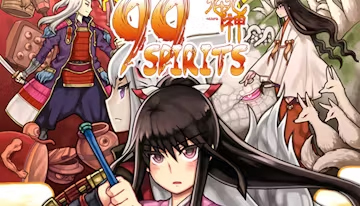 Now for something completely different, let’s talk about 99 Spirits.
Now for something completely different, let’s talk about 99 Spirits.
I’ve had this one in my backlog for a long time, probably since around the time of my yokai craze, and I decided the emphasis on spirits and demons made it a good choice to finally play this October.
And what an unusual experience it was.
99 Spirits is part JRPG, part… vocabulary game?
You play a young woman who wields a sacred sword in order to defeat Tsukumogami, inanimate objects that have become yokai or spirits. It has a simple presentation, with a grid-like screen used to explore the hub city and dungeons. Markers on the green indicate shops, conversations, items to pick up, etc., and enemies are marked as well. When you come into contact with an enemy, a battle begins.
Combat controls are fairly simple. On your turn, you choose whether to attack or defend. However, when the enemy attacks, you have a brief window in which you can press the defend button to shield yourself and counterattack. The result is a system that feels a step more active than turn-based combat.
But Tsukumogami can’t be defeated unless you know their true forms, and that’s where the twist to combat comes in. As you attack, you build a gauge that lets you use a special skill to gain clues about the spirit’s identity. Defending, meanwhile, builds a gauge that lets you call out its name – by typing the name of the object it used to be.
For example, you might give you the clues “OO” and “eating.” Using the gauge again might get you “S” and “food.” Then you use the other skill, type in “spoon,” and the spirit takes on its spoon form and can be fought normally.
It’s such a strange combination of ideas… and I love it.
Throughout the game, you can buy or find spirit indexes, which give you a list of Tsukumogami. That simplifies things, since instead of wracking your brain to figure out what word fits the description, there’s a chance you have it on the list. (The spirit index also lets you click the name instead of typing it every time.)
As you progress, you’ll unlock new skills for your sword. Did I mention this game is also partly a monster collecting RPG?
Once you unlock the third skill, you can capture Tsukumogami while fighting them in order to use special skills. These are both field skills, such as using a weapon-type Tsukumogami to cut down a tree blocking you from a bonus area, and combat skills that serve as special abilities in battle.
I would not say the story is especially in-depth, but it’s a fine story about fighting yokai with some cute/funny character interactions alongside more serious moments. It’s not especially spooky despite its subject matter, so we’ll mark this down as one of the more lighthearted games for this year’s celebration.
Overall, it’s a unique blend of ideas that ends up being a lot of fun. My only real criticism is that it’s buggy – the game crashed enough times that I started saving after every few battles, just in case.
There are some secrets I didn’t get on my playthrough, including an alternate ending, but I don’t think I’ll go back through it to try to get everything. I probably won’t get the DLC, either. Nevertheless, I’m happy I finally got around to playing 99 Spirits.
(On a side note, email subscriptions have halted again, so here’s hoping I find a lasting solution.)
---If you want posts like this delivered straight to your inbox, enter your email in the box below to subscribe!
Did you enjoy this post? Be sure to share it with your social networks! The post Celebrating All Things Spooky: 99 Spirits appeared first on Samantha Lienhard.
October 9, 2024
Celebrating All Things Spooky: Marginalia
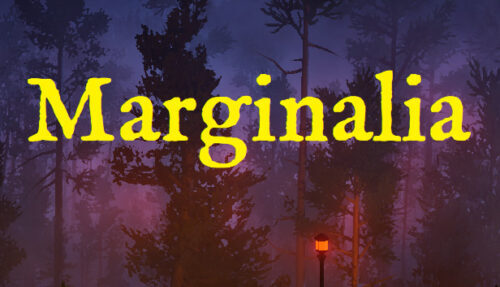 The next spooky game I decided to play is a short horror game called Marginalia, and after my mixed feelings about Monday’s game you can imagine my horror when the game began by a parked car on a desolate road.
The next spooky game I decided to play is a short horror game called Marginalia, and after my mixed feelings about Monday’s game you can imagine my horror when the game began by a parked car on a desolate road.
But despite that immediate sense of similarity, it doesn’t have much in common with Desolate Roads at all.
Marginalia is walking sim in its purest form. Although I’ve tagged it as an adventure game here, there are no puzzles or items you need to interact with, nothing but walking in search of the next landmark. Moreover, the story is narrated to you, which makes it feel more like a short story using a game format to build atmosphere.
Fortunately, the story is interesting enough that it works. It’s nothing groundbreaking, but it has enough of a hook – a man vanishing in search of a mysterious place called Kestlebrook, and the narrator’s search for him while learning about Kestlebrook from his notes – that I wanted to continue on to hear each new part.
Unfortunately, the world is too big for this sort of experience to feel rewarding. Everything more or less looks the same, so if you get off track, it’s difficult to orient yourself. The major landmarks are lampposts that you can see from a distance, but once you reach one, it can be a while before you see the next – enough that if you get going in the wrong direction by mistake, you could be wandering for a long time.
(It happened to me. I missed the direction I was supposed to head in and walked for about ten minutes with nothing happening before I decided to restart. This is another one of those games with no saves.)
There are also secret landmarks that add an additional layer to the story, but the nature of the map makes exploration feel so unrewarding that I didn’t feel it was worth seeking them out, as much as I would have wanted to.
Marginalia is a short game that takes under an hour to complete, and even if there isn’t much interaction, it’s a nice little horror story that I enjoyed. However, a smaller game world with clearer landmarks would have gone a long way toward making it a more enjoyable experience.
---If you want posts like this delivered straight to your inbox, enter your email in the box below to subscribe!
Did you enjoy this post? Be sure to share it with your social networks! The post Celebrating All Things Spooky: Marginalia appeared first on Samantha Lienhard.
October 7, 2024
Celebrating All Things Spooky: Desolate Roads
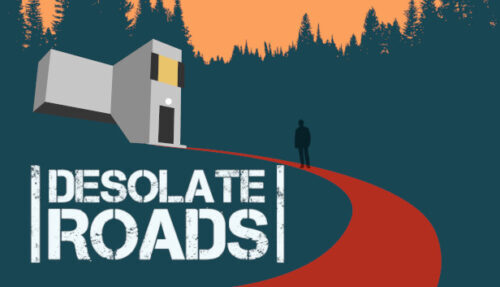 Desolate Roads is a short horror game in which you run out of gas in the middle of nowhere. Now you need to search the desolate roads for something that can help.
Desolate Roads is a short horror game in which you run out of gas in the middle of nowhere. Now you need to search the desolate roads for something that can help.
It’s structured like a standard survival horror puzzle – down one path you find a chained up gate, down another path you find bolt-cutters that you can’t take yet because they’re stuck in a rusted vise, and so on.
As you explore, you get text messages that slowly shed light on the surrounding events. At other points, fiery phantasms materialize and chase you, with your only recourse being to banish them with the help of the radios in nearby cars.
These are all neat ideas, but unfortunately it ends up feeling tedious instead of scary.
Desolate Roads is a short game that takes under an hour to complete, and there are no save points. You really only need a handful of items, which would make it even shorter, so it makes up for this by having it set in a large area that requires a lot of walking to reach any specific spot. These key areas are easy enough to find, being at the end of clear paths, but they require you to spend a lot of time slowly walking to reach them.
That’s probably intentional to build up the atmosphere, but since enemy encounters are scripted, you spend most of the time without anything happening.
Now, my first playthrough resulted in an early death, because I walked in the opposite direction at the start of the game and simply died. On my second playthrough, I went in the right direction and started paying attention to which items were where and figuring out what I’d need to do. I missed the first item, so nothing happened at all as I explored each path, but once I figured out what I’d missed, I was right on track to complete the rest – except the radio mechanic glitched out, so I had no way to survive the first enemy encounter.
By my third playthrough, I more or less knew exactly what item to use where, but I was so tired of trudging down those same roads with nothing happening that the monsters only filled me with the dread that if I failed, I’d have to do this all over again.
As you can see, my specific experience with the game colored my impressions. If I hadn’t spent so much time on my second playthrough only to run into a glitch and need to start over, I might have enjoyed it more. It does have some neat ideas, and the core gameplay isn’t bad.
But there’s just too much time spent on those desolate roads, and the atmosphere isn’t strong enough to keep the tension high.
---If you want posts like this delivered straight to your inbox, enter your email in the box below to subscribe!
Did you enjoy this post? Be sure to share it with your social networks! The post Celebrating All Things Spooky: Desolate Roads appeared first on Samantha Lienhard.
October 4, 2024
Celebrating All Things Spooky: Emio – The Smiling Man: Famicom Detective Club
Back when Emio was first teased, most of us thought it would be a new horror game from Nintendo.
It turned out to actually be a dark new entry in the Famicom Detective Club series, which was a pleasant surprise to me after I’d played the Famicom Detective Club remakes just this past May and wished the series would continue.
We discussed it a few times leading up to launch, but not since the full game has come out. So let’s talk about Emio – The Smiling Man: Famicom Detective Club.
I would not actually call Emio a horror game or even a horror visual novel, despite the expectations when it was first teased. It’s very much a mystery, albeit one with dark and disturbing elements, and I’d even say most of it has less tension than the first two games in the series. However, when I say most of it, that’s very important to why we’re still talking about it today.
Now, I wrote a full review of Emio over at MonsterVine, so be sure to check that out for my thoughts on the game as a whole.
Instead of repeating all my thoughts here, I’ll just say that I definitely recommend Emio as long as you don’t mind a strangely-paced story that feels like it saves almost everything for the very end. That end does make it worthwhile, but it left me wishing some of the reveals had been woven through the earlier parts of the game too. Meanwhile, as I’d hoped from the demo, the new function of the “think” command to give a hint means you’re much less likely to get caught in a loop of trying every action without knowing what to do, so it feels like the most player-friendly game in the series. There are also a lot of fun optional scenes, like I mentioned in my review.
Getting back to the matter of Emio as a horror game and the fact that most of it is not, that ties into my comment on the unusual pacing. The final segment of Emio gets much darker, delves into some very disturbing scenes, and earns its M rating right there.
I would say the final part of Emio is basically a short horror story in its own right.
I have a theory about why they handled the game this way – that last part is so much darker than the rest of the series that I think they wanted to keep the bulk of the game more in line with the previous ones – but it does make it an odd experience.
In short, Emio – The Smiling Man: Famicom Detective Club is a great choice to play in October, but mainly for the payoff at the end.
---If you want posts like this delivered straight to your inbox, enter your email in the box below to subscribe!
Did you enjoy this post? Be sure to share it with your social networks! The post Celebrating All Things Spooky: Emio – The Smiling Man: Famicom Detective Club appeared first on Samantha Lienhard.
October 2, 2024
Celebrating All Things Spooky 2024 Begins!
 Can you believe another October is upon us again?
Can you believe another October is upon us again?
As we head into fall, it’s time to kick off Halloween season with a month-long celebration of spookiness! That includes not only horror, but anything else that feels suitable for the season.
During this celebration, we’ll have sales, contests, and more, so stick around.
It’s time for Celebrating All Things Spooky 2024 to begin!
Reviews and ContentOur romance and mystery events this year had to be shortened, but my plan is to stick with regular reviews for Celebrating All Things Spooky – with one day a week reserved for other topics in case something crazy happens (I mean, Capcom could still announce a new Ace Attorney game).
There’s a whole bunch of horror, spooky, and otherwise Halloween-adjacent games I’m looking forward to playing and discussing this October, and I’m hoping for a mix of both scary games and lighter ones.
Sales and PromoA special promotion is coming soon! From October 4 – October 10, ebook copies of my zombie comedy novella The Zombie Mishap will be on sale for $0.99 at Amazon. Join the misadventures of two unlucky scientists who accidentally create a zombie and set out to stop it before anyone finds out!
I don’t know yet if there will be sales on The Book at Dernier and It Came Back this year or not. However, I’m hoping to get at least Dernier up at other retailers as well, so stay tuned.
And don’t forget that I also worked on the horror visual novel Not It, available now on Steam as Not It: Spookiest Edition!
Contest and PrizesNow let’s get into the contest details. For the month of October, you can earn points simply by leaving comments or replies on any Celebrating All Things Spooky post. At the end of the month, the top three participants with the most points will each get to choose a prize!
Rules:
No purchase is necessary.Only comments made between October 2, 2024 at 12:00 PM ET and October 31, 2024 at 11:59 PM ET will be counted.1 non-spam, non-anonymous comment on any Celebrating All Things Spooky blog post = 1 point. This includes comments on past years’ posts and replies to other comments.You must use an email address or website URL (or include another way of contacting you) in your comment so I can contact you if you win.The top 3 point earners will win prizes.The person with the most points will get their first pick of the prizes. The person with the second most points will pick second, and the person with the third most points will pick third.In the event of a tie, tied winners will be contacted at the same time. A tie for third place will allow for more than 3 winners. If tied winners choose the same prize, duplicate prizes will be possible.The winner will be contacted by November 2, 2024.Prizes:
Not It: Spookiest Edition (gift sent through Steam)Silent Hill 4: The Room (gift sent through GOG)Alan Wake (gift sent through Steam)Alan Wake’s American Nightmare (gift sent through Steam)Dead Age (Steam code)Five Nights at Freddy’s: Sister Location (Steam code)Lakeview Cabin Collection (Steam code)eBook copy of The Book at DerniereBook copy of It Came Back$15 sent through PayPalYou pick a game for me to review!If you choose the review option, your chosen game must be something I either own or is easily obtainable, which you can discuss with me beforehand. It must be a single game, not a collection (although the chosen game can be part of a collection). I will start playing it in November.
All right, let’s get started! Are there any spooky games you’re planning to play this October?
---If you want posts like this delivered straight to your inbox, enter your email in the box below to subscribe!
Did you enjoy this post? Be sure to share it with your social networks! The post Celebrating All Things Spooky 2024 Begins! appeared first on Samantha Lienhard.
September 30, 2024
Lost Judgment Is a Great (Though Flawed) Sequel
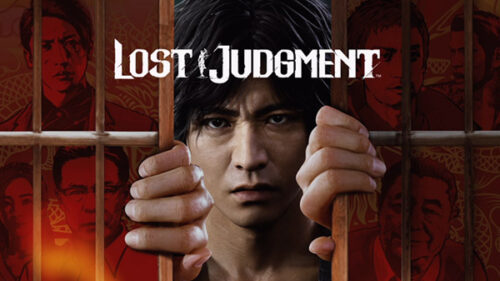 Back in 2021 when Lost Judgment was announced, I was ecstatic.
Back in 2021 when Lost Judgment was announced, I was ecstatic.
I absolutely loved Judgment, so I was planning to play its sequel day one.
So how did it end up taking me this long to do so?
Once Lost Judgment came out, I learned that it contained spoilers for Yakuza: Like a Dragon. Because of that, I decided to catch up on the Yakuza series first… which took me until the very end of last year. At that point, I was ready to continue on with Gaiden and Infinite Wealth first.
But the winner of my last contest picked the game review prize and chose Lost Judgment, so it got priority over Infinite Wealth after all.
Like its predecessor, Lost Judgment is a spin-off of the Yakuza series starring an ex-lawyer-turned-private-detective named Yagami. This time, he’s hired to investigate a case of high school bullying in Yokohama but soon finds himself looking into a murder case as well.
It’s set after Yakuza: Like a Dragon, so yes, it unavoidably spoils a major plot point from near the end of that game, so I’d recommend playing Yakuza first if you intend to play them both.
One thing that stood out to me when I played Judgment was that its story is darker than those of the main Yakuza series. Yakuza games can have quite dark stories and be very emotional, but they rarely feel as heavy as Judgment did. The same is true here, as Lost Judgment deals with a lot of heavy, upsetting topics as Yagami begins to unravel the mystery.
It still balances that out with a plethora of a heartwarming and/or hilarious side content, however, so don’t worry about that. While I didn’t find Lost Judgment’s side cases as funny as the original’s, there were still a lot of great ones, along with some other fun side content (including interacting with cats, which is always a plus for me). It also has an entire separate type of side stories called “school stories,” in which Yagami investigates high school clubs that appear to be connected to illegal activity. The school stories introduce several new mini-games and are linked through their own overarching story that has a fun Holmes-versus-Moriarty parallel, and overall they ended up being one of the best additions.
(The school stories also involve the Keihin Gang, now back as the Neo Keihin Gang. Fortunately, they only came back as characters and didn’t bring their annoying gameplay mechanic with them.)
Lost Judgment largely plays a like a more polished, improved version of Judgment, but there are also a handful of gameplay additions. Parkour has been added in certain spots, although it’s used so infrequently it barely feels worth it. Stealth is another new mechanic, but I quickly grew to dread these sections. They gave me a new appreciation for the now-reduced tailing sections.
Another new mechanic lets you listen in on conversations around the city to learn about potential side cases. I loved this, because it really made it feel more like detective work. I only wish it had been used more often.
Meanwhile, the investigation sections felt reduced and most of the time came down to finding the specific areas to start a parkour section, which was a little disappointing. In some ways, Lost Judgment feels like more of a detective game than its predecessor, so I wish that had been carried through in investigation sections too.
Now when it comes to the story, I have mixed feelings. It lacks the immediate intensity and thrills of Judgment’s story, and I found I ultimately enjoyed Judgment’s story more. Some aspects of the writing are also… odd. One returning character seems to have lost all his character development from the previous game to be treated like comic relief instead. Part of the plot also hinges on a character acting against their own best interests.
Click for Lost Judgment spoilersAnd by that I mean Ehara agreeing to the appeal. Even after he agrees, his plan is still to serve out his time and then reveal the truth about the murder afterwards. Since he didn’t intend to cooperate, the argument that he wanted to humiliate the court system further through the appeal falls flat. You can stretch your disbelief to come up with reasons, but ultimately it ends up feeling like Ehara agreed to the appeal because the plot needed him to.On the other hand, the story is filled with great moments, the mystery is the sort you really want to sit down and think about to try to put the pieces together even as the characters do, and the main antagonist is arguably the best in the entire series. No one else gets fans sitting down to debate in quite the same way.
My thoughts on the story really went up and down as I played. The early parts feel even slower than usual for the series, but once it got going, I was fully invested. Then it hit some of those snags I mentioned, and my opinion started to go downhill – yet the final hours were incredible enough that once I took some time to think about it, I realized my overall feelings toward the game had ended up much more positive again.
Click for major Lost Judgment spoilersI also loved how there were several points where Yagami and Kuwana worked together after the reveal. It really fit with his nature as a morally gray antagonist. Plus I’m just a sucker for the hero and villain teaming up.I will say I wish they had gone into depth with Yagami’s arguments a bit more. Fans joke about Yagami’s answer to everything being “Sawa-sensei,” but its major problem is that it starts to feel like if Sawa hadn’t died, he wouldn’t oppose Kuwana. Which isn’t what the game is going for; it clearly intends Yagami to be against vigilantism. If he had spent more time, especially in the later scenes, arguing against Kuwana’s methods for reasons beyond one innocent person dying, I think it would have been a lot stronger.
Also, I was amazed that Kuwana actually got to walk away. They almost never do that; sympathetic main antagonists always either sacrifice themselves or get killed in the eleventh hour by another villain. Kuwana actually walking away is wild, but also very fitting.
It has a top-notch soundtrack, too. Both the final boss theme and the major secondary antagonist’s theme are incredible.
Despite my mixed feelings about Lost Judgment’s DLC, I did end up buying it, since I wanted to get the Kaito Files and the season pass was on sale for only a little bit more. I enjoyed the extra content, although I still dislike the decision to include side cases as day-one DLC. That stuff should have just been in the main game.
Anyway, I haven’t played the Kaito Files yet – I’m planning to take a break for some of my October spooky games and then get back to that afterwards – but having finished the main game, I’m happy I finally played Lost Judgment.
---If you want posts like this delivered straight to your inbox, enter your email in the box below to subscribe!
Did you enjoy this post? Be sure to share it with your social networks! The post Lost Judgment Is a Great (Though Flawed) Sequel appeared first on Samantha Lienhard.

